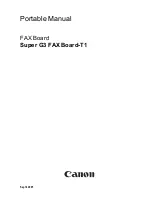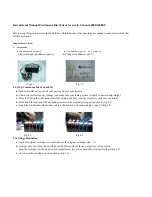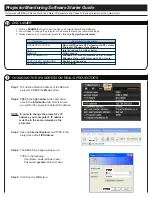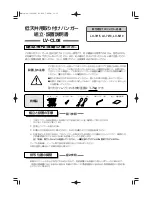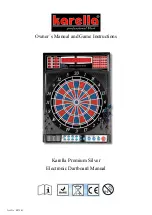
Page 2
Pattern Selection Procedure:
IMPORTANT:
Pattern selection requires the LED to be turned on.
DO NOT LOOK DIRECTLY AT LEDs WHILE UNIT IS IN OPERATION.
Remove the lens and locate the Pattern Activation Pins for your model.
(Section of typical L.E.D. board below shows pins.)
1.
Although the location of the pins varies for each LED board, this
procedure is applicable to all LED boards that offer selectable patterns.
The location of these pins will vary between models, but they will always be
on the LED side of the circuit board.
NOTE:
Turn the LED flasher on.
2.
3A.
3B.
3C.
Use a penny (or any electrical conducting item) to
contact both Pattern Activation Pins for less than 1
second and release. Repeat to go to the next pattern.
Allowing one pattern to run for more than 5 seconds will
make it the default pattern until changed.
Hold a penny against the Activation Pins for more than 1 second and release.
When you've choosen a pattern, turn off the power and re-mount the lens.
TO CYCLE FORWARD THROUGH ALL PATTERNS:
TO CHOOSE A PATTERN:
TO CYCLE BACKWARDS THROUGH ALL PATTERNS:
Available Flash Patterns:
RAPIDFIRE
375
RAPIDFIRE
150
RAPIDFIRE
75
RAPIDFIRE
30
DOUBLE FLASH 150
DOUBLE FLASH 75
COMET FLASH
ACTION FLASH
MODU FLASH
SIGNAL ALERT
150
SIGNAL ALERT
75
SCAN -
SIGNAL ALERT
BRAKE
375 Single Flashes Per Minute
150 Single Flashes Per Minute
75 Single Flashes Per Minute
Single Flashes Per Minute
150 Double Flashes Per Minute
75 Double Flashes Per Minute
75 Comet Flashes Per Minute
2 Comet Flash / 4 X 150 SFP / 2 Comet
75 to 360 Single Flashes Per Minute
150 Flashes Per Minute
75 Flashes Per Minute
2 Cycles of Patterns 3 thru 12
4 Flashes Cycle For 200 MS
™
-
™
-
™
-
™
-
-
-
-
™ -
™ -
™
-
™
-
™
-
30
®
Followed by Steady Burn
STANDARD BRAKE
-
Steady Burn
Pattern
Activation
Pins
Installation:
1.
Using the dimensions from the template, mark off and drill the two 5/16 inch
diameter vent tube holes and the 1 inch wire hole into the mounting surface.
NOTE:
Make sure lighthead will not interfere with existing equipment and be
aware of any items on the opposite side of the mounting surface.
2.
Insert the two vent tubes extending from the rear of the lighthead into their holes.
Using a scribe or similar tool, mark off the 4 mounting holes.
3.
Using a drill bit sized for a #6 sheet metal screw (and the thickness of the
mounting surface), drill the four mounting holes. Install a grommet
(customer supplied) into the 1 inch wire hole.
4.
Using appropriately sized wires (Minimum wire size / 18 AWG), run the lighthead
wires to their connections. (See Wire / Function Charts) Fuse the +12VDC
connections at 3 Amps and test the operation of the lighthead before securing it
to the vehicle.
5.
Position the lighthead components onto the mounting surface and secure to the
vehicle using four supplied #6 x 1-1/4” sheet metal screws.
Note: This product draws significantly less current than a standard
incandescent automotive bulb. If your flasher does not operate
properly, it may be necessary to replace your existing flasher
module with a Whelen 3TERM flasher module. Contact your sales
representative for specific vehicle application.
WARNING! The outer surfaces of this product may be cleaned with
mild soap and water. The use of any other chemicals may
void the product warranty. Do not use a pressure washer.
Specifications:
BRAKE / TAIL / TURN
LED Assembly
Input Voltage
.
.
.
Default Flash Pattern -
- 120 LED's
- 12 8 VDC
- Tail - 0 125 AMPS
Brake - 0 70 AMPS
Signal Alert Brake
(MAX.)
±20%
Input Current
™
Input Current
-
E-SPEC
Input Voltage
Input Current
.
Default Pattern
-
12.8 VDC ±20%
- 0 5 AMPS
- Signal Alert
™
LED Assembly
/ 56 LED's
(MIN.)
Input Voltage
.
.
- 12 8 VDC
- Tail - 0 075 AMPS
Brake - 0.375 AMPS
Default Flash Pattern
- Signal Alert
Brake
±20%
Input Current
™
Input Current
-
- 0 40 AMPS
0.45 AMPS
- Signal Alert
FLASHER
Input Voltage
.
-
12 8 VDC
Input Current
.
Default Pattern
(Blue / White / Green)
(Amber / Red)
±20%
™
Input Current
-
- 0 70 AMPS
- Signal Alert
Brake
TURN
Input Voltage
.
-
12 8 VDC
Input Current
.
Default Pattern
±20%
™
- Flood: 0.450 AMPS
Back-Up: 0.225 AMPS
- Steady
STEADY
Input Voltage
.
-
12 8 VDC
Input Current
Default Pattern
±20%
Input Current
-






